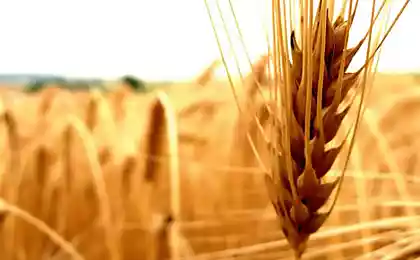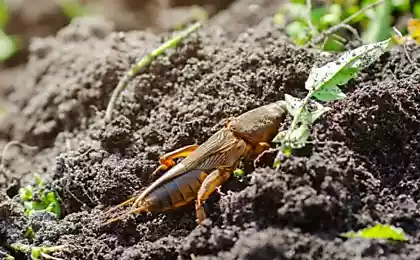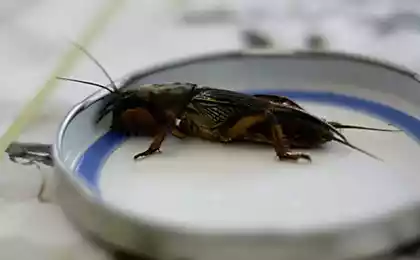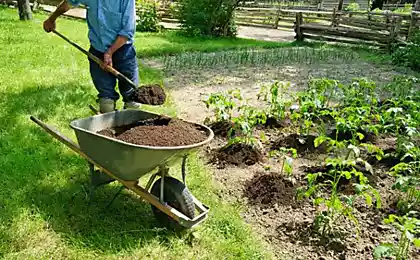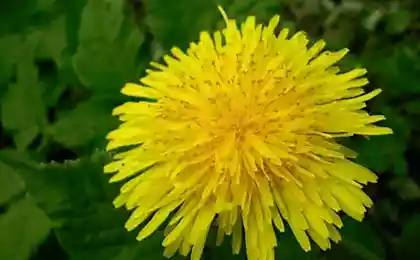538
Methods of dealing with the mole cricket in the garden
Mole cricket in the garden is a disaster for the cottagers. Peregruzhennyi roots, seeds destroyed, spoiled roots of radishes, carrots and potatoes — this is not a complete list of "arts" chirruping, through which vacationers for a long time put it in some of the worst pests. So the question is, how to get rid of it, has been on the agenda for vegetable growers.
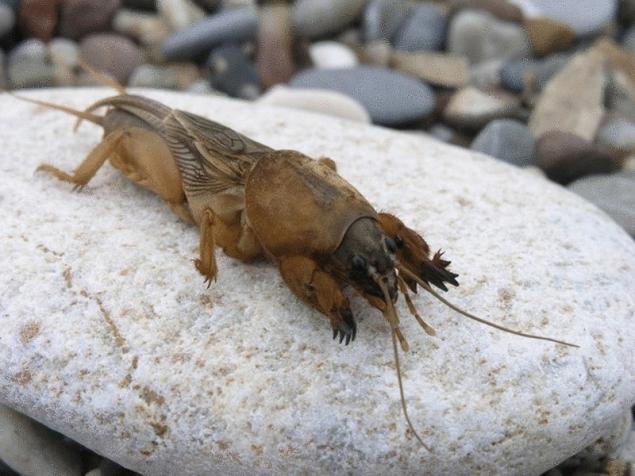
If you are supporter of chemicals on the site, have a good selection of environmentally friendly traditional methods, which with regular use will allow or even get rid of the pest or significantly reduce its quantity.
Soap solution
One of the most simple and easy to use methods. Saw the entrance to the underworld medvedkine, prepared soap solution and add a small squirt directly into the hole! Only 1-2 liters of water and the insect jumps out of the hole. Remains catch and kill.
Dissenting opinion
Many sources suggest to do "any" soap, even Laundry detergent. Dares not support these tips. In washing powders contain phosphates, optical whiteners, synthetic fragrances and many other supplements which have absolutely nothing to do in the soil of our gardens! In the end, basic soap and cheaper, and safer (besides, there's plenty of data that even a simple clean water chases the mole cricket from the ground...)
Traps
Convenience traps that they "LP": placed in the garden and mind your own business, and the traps will be a week or two to "work". Here are the most effective (for reviews gardeners) design.
Glass ambush
The principle of this trap is to use the fact that the cricket moves under the ground already dug tunnels. If during such trails to dig a glass jar with a capacity of 0,5-0,7 l, a pest with high probability will be at its bottom
In a jar you can pour water (half), then there will be additional "luring" effect of humidity.
Honey trap
To dig into the ground a glass jar or plastic container with smooth walls, smear honey on the inside of the can about 1/4 of the height for the smell. Top cover with a piece of sheet iron, and pour on top of the straw. Medvedka "go" to the heat and the smell of honey.
Trap with beer
In glass bottle of 0.5 litre capacity pour 100 ml of fresh beer and dig on a slight incline (as shown) in a depression in the soil, and the neck should not touch the soil. The soil in the recess a little water and close with a sheet of iron, tiles or cardboard. "Beer" Medvedka, according to truckers, "going well". After 7-10 days the bottle along with got there insects is removed, and traps are put in other places.
Such bait is recommended to place at the rate of one for every 4-5 square meters.
Dung trap
The principle of this trap is based on the fact that the mole cricket for overwintering selects the warm, soft soil environment. Ideal — manure. Therefore, if during the autumn digging the garden to make the area 2-3 pit half a meter deep and fill them polupereprevshie manure mixed with straw, that will be a very useful "military cunning". The mole cricket will find itself in a hole winter shelter, and summer resident is a cause for joy, when, the gut contents of treacherous traps before the frost, will save your land from the lion's share of mole crickets and their larvae.
For dung traps the best is horse manure. But given that we recorded ourselves in the gardens of mole cricket often with cow and pig, we can conclude that they she did not hesitate, therefore, in the absence of the horse should not get upset. Some gardeners "to be sure" suggest in dung traps to add another beer, and sunflower oil.
Biothermal dung traps it is advisable to do so in the spring time. Small handful of fresh manure in different parts of the garden will be the places that mole crickets will choose for laying their eggs. 25-30 days after sowing manure trap will need to review and destroy found mole crickets and their offspring.
Egg dessert
Dried egg shells to crush and season unrefined (with the smell) with sunflower oil (even better if there is a home oil). This fragrant lure suggest to put into the holes and grooves, intended for planting seeds and seedlings.
Medvedka necessarily "driven" to this dessert, which, according to gardening experts, will be disastrous for it. And all the leftover shells will be an excellent fertilizer. So, a good recipe is not only safe, but useful.
Deceptive comfort
Mole cricket selects a warm, moist place to build a nest. On this knowledge and founded the principle of the trap. In the video — the story of Elena Terekhova just about how you can significantly reduce the "herd" medvedok on the site by simple manipulations with pieces of cardboard or tar paper
Scaring smells
According to the observations of farmers, mole cricket avoids some of the smells. Therefore, they offer:
Planted in between rows of vegetable crops marigolds, calendulas or chrysanthemums
Spread out among the potato patches (after flowering) branches of coniferous trees (spruce, pine, fir)
To stick to the land the beds of fresh-cut stakes or branches of aspen or alder with a thickness of 2-4 cm (required with bark). Stick these stakes is recommended to a depth of 25-30 cm at a distance of 1.5-2 meters from each other and change them as they dry
Pour the "marked passages" place in the garden of infusion onion peel and onion waste
When planting seedlings to drop into the hole clove or a bit of crushed garlic.
In wells for planting of vegetable crops to lay fresh fishes, which upon decomposition will give a repellent smell
On the perimeter of the greenhouses to make large furrows, in which to pour the naphthalene or kerosene-soaked sand
When sowing parsley, beets, carrots and other root crops watered the furrows with water and adding iodine. Per 10 liters of water is recommended to add 20 drops of iodine.
Each of the "sweet" method has its supporters and opponents — depending on the results of their use or reviews from neighbors. What will be the result on your site, show only personal experience.
Additional natural enemies
Have mole crickets and their personal enemies. And a lot of them.
Birds
starlings
crows
rooks
storks
Birds get beaks mole crickets and their larvae from the ground and eat them. And this is another argument in favor of actively attracting birds to their garden plots.
Insectivorous of our allies can become
Jerzy
shrews
lizards
moles
ground beetles
ants
scolopendra
But the wasp, Larra devilish, burrowing wasp, a loner, uses cricket as a living cradle for her babies — she shot sting paralyzes the selected victim and, while she is immobilized, lays its egg in the "Medvedkin body." Departed from paralysis of the mole cricket bears the wasp larva to complete its development, and then dies.
"Armor" for seedlings
Many gardeners think through in advance the protection of valuable plants, in the first days after the landing not to lose a good half of the planting material. For this purpose they are made for roots and lower part of the stem, the protective "armor" made of plastic bottles, stiff fabrics, thick film and other materials. So, protective clothing, plants and planted in the ground. The main thing — that such "armor" is not allowed a mole cricket to get to the coveted roots and stems.
The mole cricket is really a dangerous pest that can bring tremendous harm to the crop. But methods of dealing with it enough. All presented methods are proven and all are "working". Of course, the traditional methods in different conditions in different ways and works: where more efficiently, where less, they and folk.
Source: globalscience.ru
Concern Ford intends to move their employees to the electric vehicle
The Eastern Caribbean will help RES

